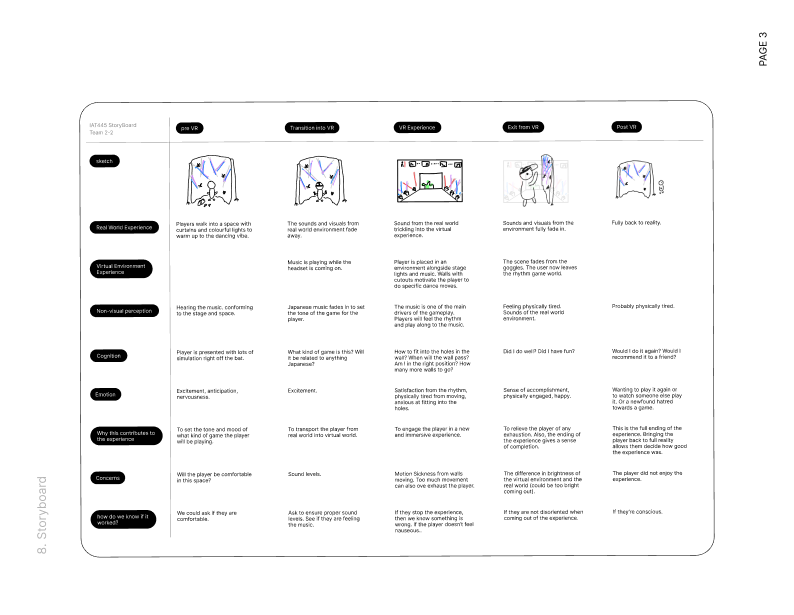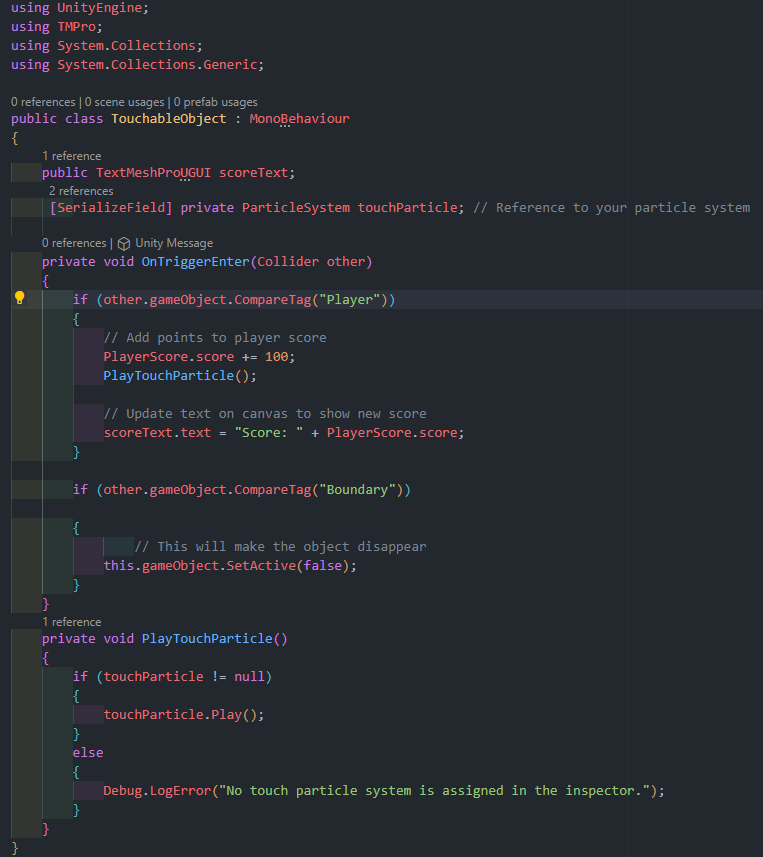The Programming
The development of "The Dancing Wall VR" involved intricate programming to bring the immersive dance experience to life. Here's a closer look at the technical aspects, scripts, and problem-solving strategies employed during the programming phase.
1. Development Process Overview:
The programming process comprised three main components implemented in Unity to create a proof-of-concept prototype. Initially, a non-VR version of the game was developed, including moving walls, a playable character, and collision detectors. Once the prototype was successful, the components were transitioned into a VR project. Key to this transition was the creation of a fully rigged body to capture hand movement and enable a more immersive experience.
2. Rigged Body Implementation:
Creating a fully rigged body was a critical step to enhance player interaction in the virtual environment. The body rig captured hand movements while automatically adjusting elbows. The legs were designed to bend up and down, providing a fake stepping animation synchronized with the player's VR headset movement. Adjustments were made to ensure the body's responsiveness, addressing issues such as slow movement and unresponsiveness.
3. City Environment Optimization:
The city environment, sourced from an online prefab, underwent optimization for optimal performance. Individual meshes and lighting elements were adjusted or removed to create an environment that seamlessly integrated with the rhythmic gameplay.
4. Script Descriptions:
Several scripts were developed to manage different aspects of the game. Here's a brief overview of some key scripts:






